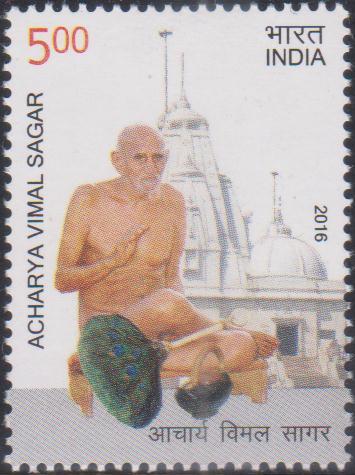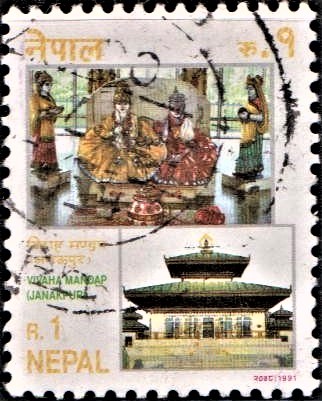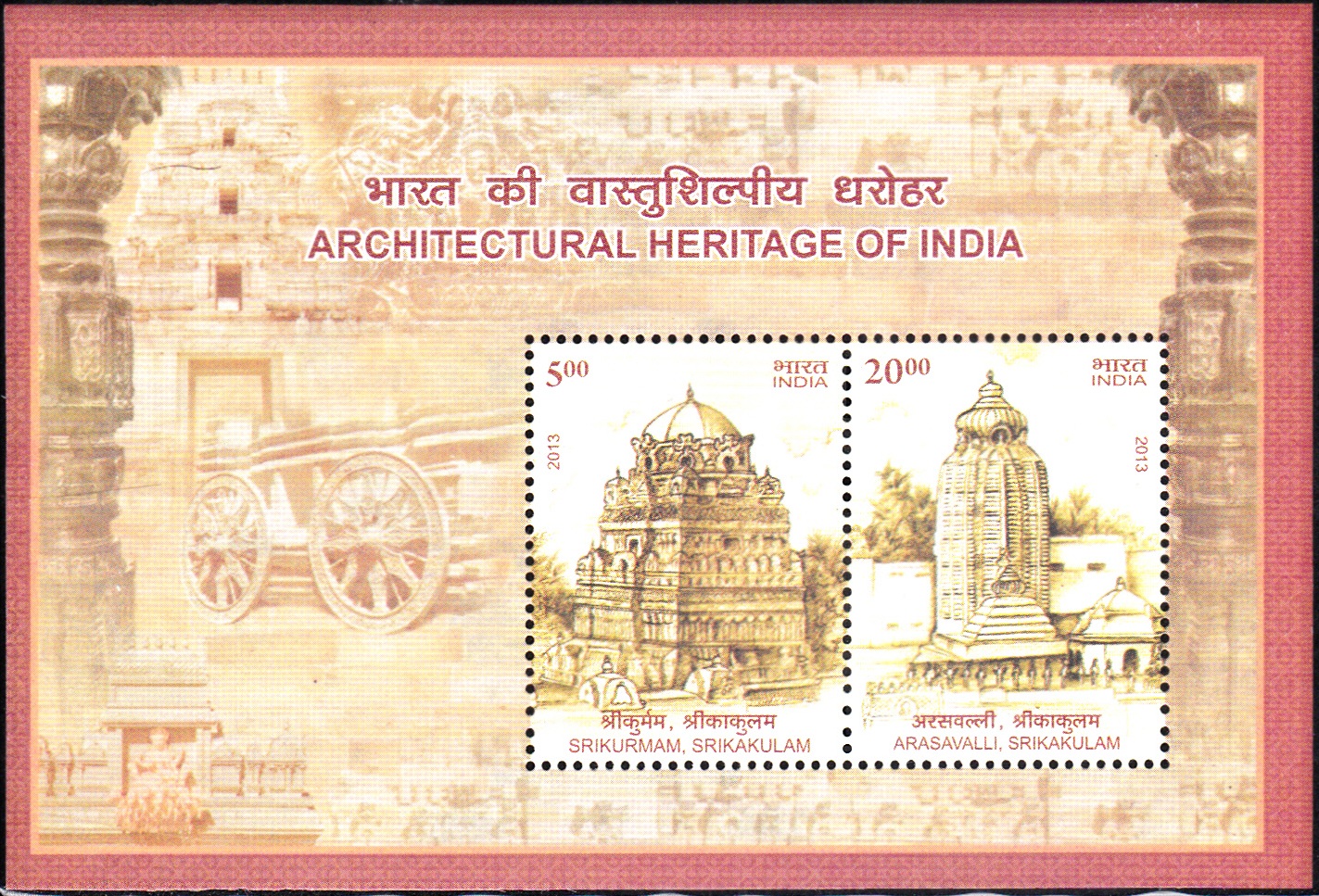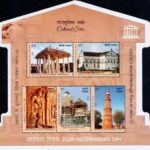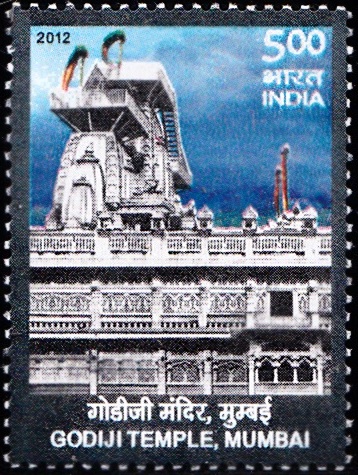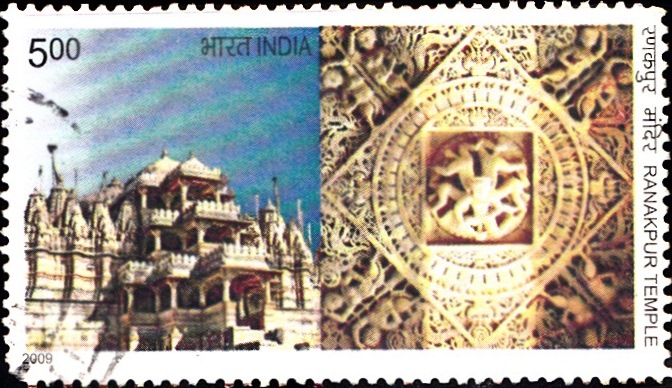
Dilwara & Ranakpur : Heritage Jain Temples
Complete Set of 2 nos of commemorative postage stamps on the Heritage Jain Temples from Rajasthan : Dilwara Jain Temple and Chaturmukha Dharanavihara, Ranakpur :
Issued by India
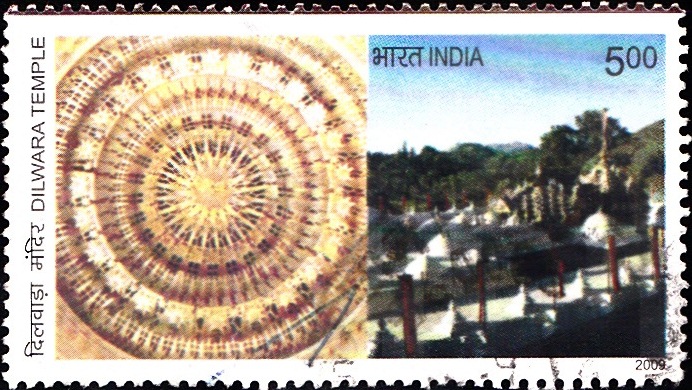

Issued on Oct 14, 2009
Issued for : The Department of Posts is happy to honour India’s heritage with the issue of this set of special postage stamps on the Dilwara and Ranakpur Temples.
Credits :
Stamp & FDC : Sankha Samant
Cancellation : Alka Sharma
Type : Stamps, Postal Used
Colour : Multi Colour
Denomination : 500 Paise each
Stamps Printed : 0.4 Million each
Printing Process : Wet–offset
Printer : Security Printing Press, Hyderabad
About :
- These two temples of Rajasthan which are considered among the most sacred pilgrimages of Jains across the world have an architectural abundance and opulence that offers a sharp and unmistakable contrast to the simplicity of deities to whom they are dedicated. The intricacy of the architecture and its detail are absolutely stunning.
- Dilwara, near Mount Abu, has a cluster of five marble temples built by the Chalukyas between the 11th and 13th centuries AD in the range of forested hills. The use of marble is exquisite. The opulent entrance way, minutely carved ceilings, doorways, pillars and panels leave the viewer overwhelmed. Each of the five temples is named after the village in which it is located. The Vimal Vasahi and Pittalhar Temples are dedicated to Sri Adinath, Rishabha Dev, the first Jain Tirthankar; Luna Vasahi to Shri Neminath, the 22nd Tirthankar; Khartar Vasahi to the 23rd Tirthankar, Sri Parshvanath and Mahavir Swami’s temple to the last Jain Tirthankar, Sri Mahavirji. Vimal Vasahi was built in 1021 by Vimal Shah, a minister of the Chalukya King of Gujarat, Bhimdev I. Among the rich carvings are the lotus petals, flowers and scenes from Jain and Hindu mythology carved on the ceilings, ‘mandaps’; pillars and arches; the 12 decorated pillars of the Rang Mandap; the female figures with musical instruments; the 16 Vidyadevis (Goddess of Knowledge) and the Navchowki’s brilliant carvings on nine rectangular ceilings.
- Luna Vasahi was built in 1230 by two Porwad brothers, ministers of a Vaghela ruler of Gujarat, Virdhaval. Designed on lines similar to Vimal Vasahi Temple, the Rang Mandap ceiling has a big ornamental pendant surrounded by concentric carvings of Tirthankars and monks. The Hathishala or elephant cell has 10 beautiful and realistic marble elephants. A Kirti Stambha in black stone constructed by Rana Kumbha of Mewar stands on the left of the temple.
- The other 3 temples are small but equally elegant. The “Pittalhar” temple derives its name from the massive metal statue of Rishabh Dev made of five metals, primarily brass (pital). The Parsvanath Temple, built in 1458-59 is the tallest of the shrines at Dilwara. Each face of the sanctum has a portico or mandap intricately carved with sculptures depicting ‘dikpals’, ‘vidyadevis’, ‘yakshinis’, and ‘shalabhanjikas’ in grey sandstone.
- The Mahavir Swami Temple was constructed in 1582 and its distinctive features are the paintings on the upper walls of the mandap painted in 1764 by artists of Sirohi.
- Ranakpur, located between Jodhpur and Udaipur near Sadri in Pali district lies in a valley of the Aravali Range. It is known for its marble Jain Temple and a much older Sun Temple across the road. Dedicated to Sri Adinath, the first Tirthankar, this temple is built of light coloured marble. It has over 1444 marble carved with exquisite intricacy, each different. It is said that it is impossible to count the number of pillars. Every statue faces another statue. One beautiful carving is made out of a single marble rock, and depict 108 heads of snakes – whose tails are impossible to find. The temple is said to have been built by Seth Dharma Sah with help from Rana Kumbha of Mewar in the 15th century. It has a massive subterranean vault and the temple complex consists of the Chaumukha Temple, Parsvanath Temple, Amba Mata Temple and Surya Temple of which the first is the most prominent. Sri Adinath is the main deity and his four-faced image faces all the four directions suggesting his conquest of the cosmos. With 80 domes and 24 pillared halls the sheer volume of sculpture and its richness takes one’s breath away. The columns change colour from golden to pale blue every hour. The Mandap has two large bells of 108 kg. each which have a harmonious ring. The Parsvanath Temple with its intricately carved windows and the equally beautiful Sun Temple also warrant mention.
- Text : Various sites on internet.
Subscribe
Login
0 Comments
Oldest


